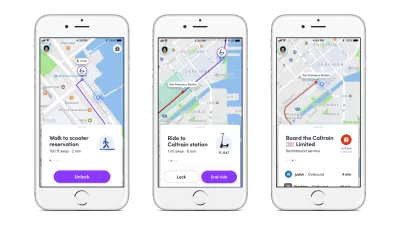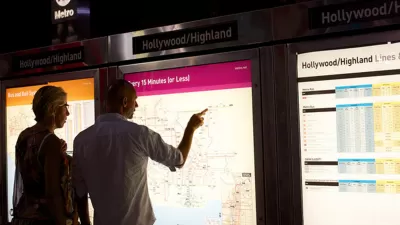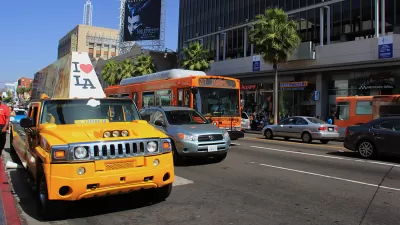With new transportation options coming to cities from a plethora of innovators and entrepreneurs, how will public transit agencies respond? Are these modes in competition, or does their widespread use actually benefit one another?
A recent VerdeXchange 2016 panel brought together the public and private sectors to hash out these complex questions. Santa Monica City Manager Rick Cole moderated a conversation among LADOT General Manager Seleta Reynolds, Lyft Transportation Policy Manager Emily Castor, Scoot founder Michael Keating, and Alta Motors CEO Marc Fenigstein.
Castor pointed out that for transportation network companies like Uber or Lyft, a strong public transit system is not a threat, but a boon to the bottom line.
"The more viable it is for people to live here without owning a car, the more likely it is that they’re going to use Lyft frequently in combination with transit and other modes," she explained. "We need to look at how we can create this robust ecosystem together."
The key, and sometimes sticking point, is "together." "How do you innovate inside a bureaucracy? How does government do startups?" Reynolds asked. "What is the most effective role for the public sector in the midst of all of this very welcome—and sometimes unwelcome—disruption?"
What works best for both the public and private sectors, the panelists agreed, is cooperatively fostering a multiplicity of options that "overlap but don’t fully substitute for one another." And it works for people: Options allow customization, which gives the efficient movement of people primacy over any particular type of vehicle.
That creates plenty of space in the market for sorely needed innovation.
One example is Scoot, an electric scooter-sharing service based in San Francisco and seeking to enter the L.A. market. "Our core rider is a transit rider who is sometimes in a hurry," founder Keating told the audience—only semi-joking.
No discussion of transportation innovation can avoid considering the coming of autonomous vehicles, of course. Also covered: the influence of transportation on public space, the place of bike-share in the transportation ecosystem, public-private partnership and co-branding services, equity in transportation planning, and more.
An edited transcript of VerdeXchange's panel "Disruption on Wheels: A New Mobility Model For Cities" is printed in The Planning Report.
FULL STORY: Public & Private Pros Opine on How 'Choice' Impacts Urban Transportation

Alabama: Trump Terminates Settlements for Black Communities Harmed By Raw Sewage
Trump deemed the landmark civil rights agreement “illegal DEI and environmental justice policy.”

Study: Maui’s Plan to Convert Vacation Rentals to Long-Term Housing Could Cause Nearly $1 Billion Economic Loss
The plan would reduce visitor accommodation by 25% resulting in 1,900 jobs lost.

Planetizen Federal Action Tracker
A weekly monitor of how Trump’s orders and actions are impacting planners and planning in America.

Wind Energy on the Rise Despite Federal Policy Reversal
The Trump administration is revoking federal support for renewable energy, but demand for new projects continues unabated.

Passengers Flock to Caltrain After Electrification
The new electric trains are running faster and more reliably, leading to strong ridership growth on the Bay Area rail system.

Texas Churches Rally Behind ‘Yes in God’s Back Yard’ Legislation
Religious leaders want the state to reduce zoning regulations to streamline leasing church-owned land to housing developers.
Urban Design for Planners 1: Software Tools
This six-course series explores essential urban design concepts using open source software and equips planners with the tools they need to participate fully in the urban design process.
Planning for Universal Design
Learn the tools for implementing Universal Design in planning regulations.
Caltrans
Smith Gee Studio
Institute for Housing and Urban Development Studies (IHS)
City of Grandview
Harvard GSD Executive Education
Toledo-Lucas County Plan Commissions
Salt Lake City
NYU Wagner Graduate School of Public Service





























